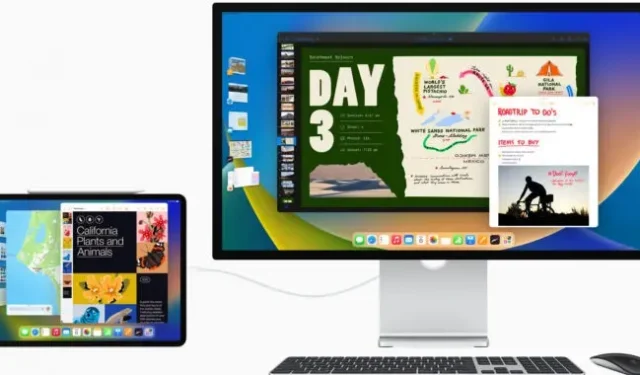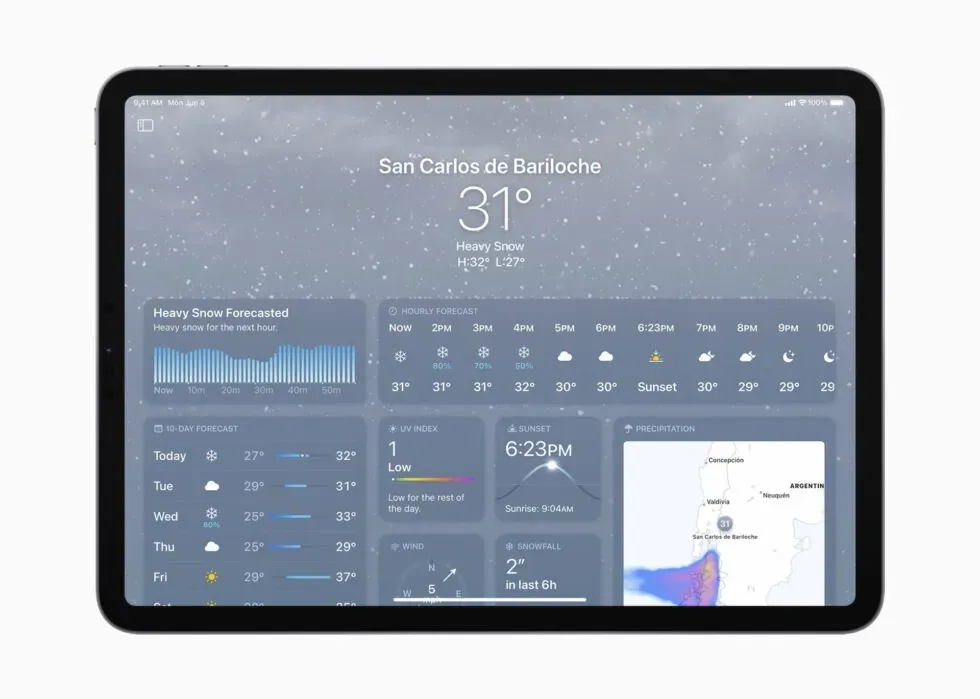iPadOS 16 has many updates, but new multitasking features require an M1 chip.

For example, the updated collaboration feature will allow users to work together in real time with certain applications. You’ll be able to send a document from the Apple Pages app to a group via a single “share link,”allowing multiple users to edit the same file instead of each having to deal with their own copy. This feature works the same as it does in apps like Google Docs. A brand new app called FreeForm also provides a shared canvas for meeting together, taking notes, sketching, and communicating via FaceTime or Messages.
Speaking of messages, the app is getting the same updates as in iOS 16 and macOS Ventura: the ability to edit or undo recent messages, and the ability to mark conversations as unread if you want to be reminded to come back to them later.

The Apple Weather app is (finally) coming to the iPad as part of an update, and there will also be a larger-screen version of the app that has been available on the iPhone for a long time. The app contains the same information as the phone version, but has been redesigned to better take advantage of the iPad screen. Unfortunately, it looks like Apple developers still haven’t found a way to port the complicated, resource-hungry iPhone Calculator app to the iPad.
The most significant new addition for power users who want their iPads to replace their laptops is Center Stage, a feature that Apple originally announced as one of the new macOS Ventura features. Stage Manager is a cross between true windowed multitasking and full-screen macOS and iPadOS. It allows you to focus on a small number of applications at the same time. The column on the left side of the screen serves as an application switcher, allowing you to switch between target applications.
On both iPad and macOS, Stage Manager supports freely resizable overlapping windows. We’ll have to see how this works in practice, but it could be an improvement over the sometimes clunky iPad split-screen multitasking modes. Apple is also using Stage Manager to bring full external display support to the iPad for the first time, rather than the half-hearted mirroring feature iPads have used so far. With Stage Manager, you can use up to four apps per screen – four on the iPad screen and four on the external display if you have one.
The bad news for fans of iPad multitasking is that Stage Manager and external display support place heavy demands on the hardware. They require an iPad Pro or iPad Air with an M1 chip, meaning only the latest generation of high-end iPads will be able to use the feature at all. This requirement is likely either processing power or RAM related – all M1 iPads have 8GB or 16GB of RAM, as do M1 Mac models. The A14 chip in the latest generation iPad Air only shipped with 4GB of RAM, while the A12Z chip in 2020 iPad Pro models comes with 6GB.
The iPad M1 will also be able to take advantage of the macOS-like Display Zoom feature, which will allow the iPad to use non-standard display resolutions to display more content on the screen at the same time (at the expense of a small, but generally complex – note the reduction in clarity). To help with all those multitasking features, the iPad M1 will also support virtual memory swap files, something that regular PCs and Macs have supported for decades – when you run out of RAM, the system will use “up to 16GB”of your storage as virtual storage. RAM instead of pausing tasks in the background like most iPhones and iPads do.
We’ve covered many of the other new iPadOS 16 features in our iOS 16 article. The list of highlights includes Live Text in Video OCR, the ability to transfer FaceTime calls between your Apple devices, the new Siri, and Dictation. improvements, improved parental controls, iCloud Photo Shared Library feature, and more.
iPadOS 16 update coming this fall; a developer beta is available now, and a public beta will open in the next few weeks. The update will work on most iPads that support iPadOS 15, but not the iPad Air 2 or fourth-generation iPad mini.
Leave a Reply